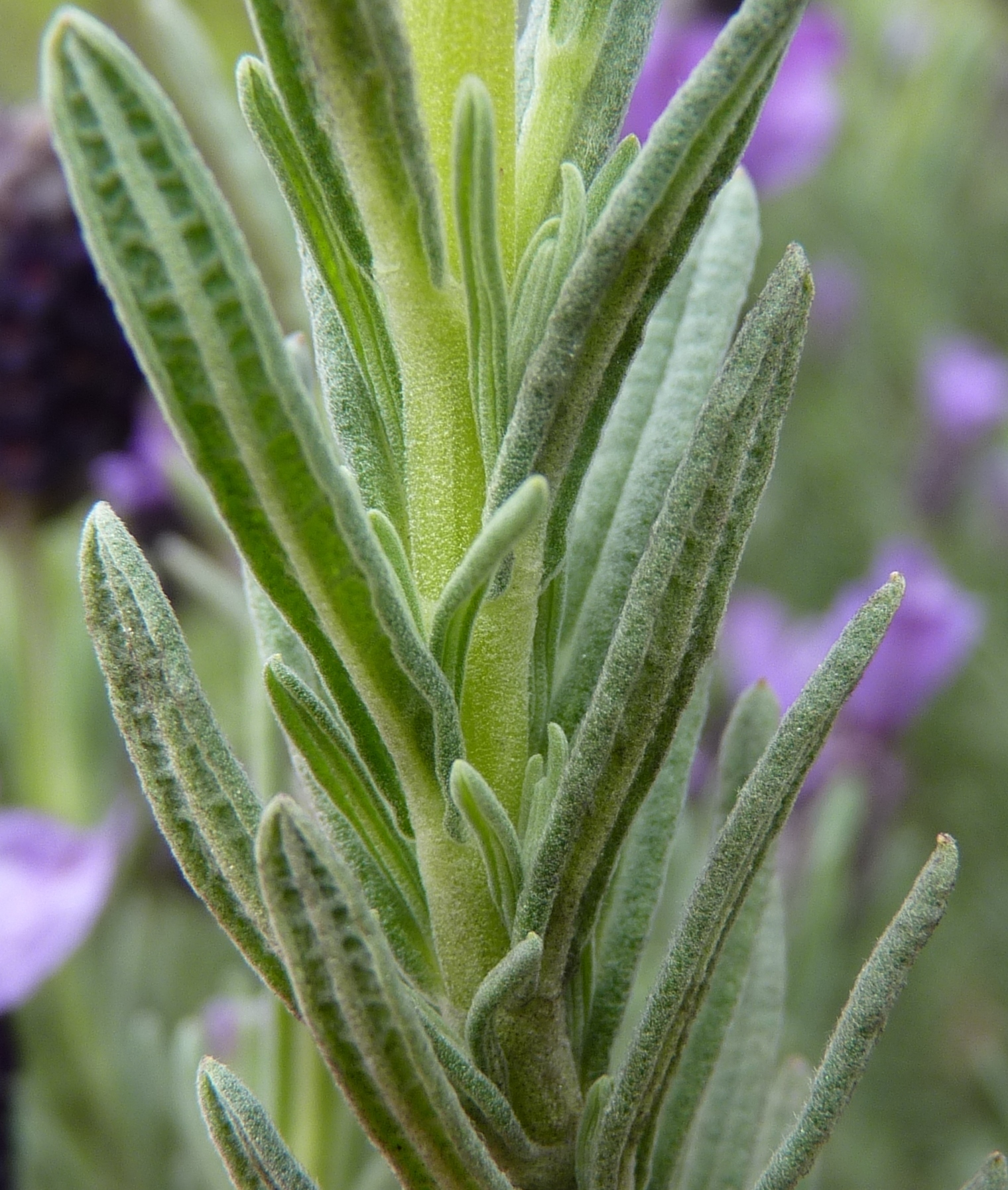
Latin lavare— to wash, referring to lavender water, a refreshing, fragrant water containing oil of lavender.
Aromatic, evergreen, erect or spreading shrubs and subshrubs. Leaves simple and entire, dentate, occasionally divided once or twice; margins generally rolled under. Flower clusters terminal, forming spikes on long stalks that are sometimes branched at the base. Floral bracts at the base of the individual flowers. Calyx with mostly 13 veins, occasionally 8-15, and with 5 tooth-like, unequal lobes. Flower tube 2-lipped, the upper lip 2-lobed, lower 3-lobed, purple to blue, occasionally white or pink. Fruit containing 4 nutlets.
Used in the home garden for fragrance, foliage effect, hedging and other formal effects.The Australian climate is, in general, ideal for species from the Mediterranean region and Canary Islands. Oil is concentrated in the calyx at the base of the flowers: L. angustifolia has the sweetest fragrance, L. ×intermedia is more camphoraceous and L. latifolia the most camphoraceous. Many growers are establishing lavender farms - some for the dried flower market, others for oils - and the Australian Lavender Growers' Association was formed in 1995. The largest lavender farm in the southern hemisphere is the Bridestowe Estate at Lilydale in northern Tasmania established over 80 years ago and producing about 11% of the world's oil supply for the perfume industry.
of lavender species and hybrids is relatively straightforward but cultivars are difficult. English Lavender grown from seed results in considerable seedling variation and it seems likely that on occasions these seedling variants have either not been given names at all, or been given the names of similar, related cultivars. For these reasons L. 'Hidcote' and L.'Munstead', in particular, are often confused or wrongly named. Chemical 'fingerprinting' by analysis of oils and DNA is being tested as a means of cultivar identification.
Alfalfa Mosaic Virus may be a problem in commercial plantations; it manifests itself as a yellow mosaic pattern on the leaves but should not be confused with the yellowing produced by the stress of excessive heat or lack of water.
A few species (L. multifida, L. viridis) may be grown from seed as annuals but the most widely grown cultivars can only be propagated from cuttings taken in spring and autumn, as seed will not grow true to type from cultivars.
Sold as fresh flowers, dried flowers, firelighters and a range of culinary, craft and skin products. Oil of lavender is extracted for its use both as an antiseptic and for its perfume (in bath water, sachets, pot-pourri, food flavourings and cosmetics, etc.).
Woody shrubs with distinctive flower spikes on long stems, and foliage with a characteristic perfume.
The OPCAA has 2 collections: the first is held by Rosemary Holmes and Edythe Anderson of Yuulong Lavender Estate, Mt Egerton, Vic, which has over 80 different kinds, with many cultivars introduced from New Zealand and England in 1998; the second collection is held by Clive Larkman of Larkman Nurseries, Lilydale, Vic. On New Zealand's N Island Peter Carter at Waiuku near Auckland holds a large collection of about 250 different kinds and a similar number is held on the S Island by Virginia McNaughton of Christchurch.
28 species from W Asia, India, Arabia, N tropical Africa, Mediterranean and Atlantic Islands, mainly in dry, sunny habitats.
Species: Chaytor (1937), De Wolf (1955b), Miller (1985). Cultivars: Tucker (1981), Tucker & Hensen (1985), McNaughton (1994), Upson (1999). Popular: Festing (1984), McLeod (1989). Journals: Lavender Bag (an international biennial newsletter produced in the UK which commenced May 1994); The Goode Oil (a quarterly publication of the Australian Lavender Growers' Association Inc.).
Source: (2002). Lavandula. In: . Horticultural Flora of South-eastern Australia. Volume 4. Flowering plants. Dicotyledons. Part 3. The identification of garden and cultivated plants. University of New South Wales Press.

Flower spikes purple with white terminal petal-like bracts.
A controlled pollination of L. viridis and L. stoechas subp. pedunculata by breeder Neil Richardson of Yendon, Victoria.
PBR taken out by the Australian Red Cross. PVJ 9(2)61.
Fast growing with tall stems, rich violet flowers and feathery foliage; summer through to winter.
A purported hybrid with L. pinnata as a dominant parent, named after its discoverer, Sidonie Barton of Kenthurst, NSW.
PVJ 9(3)71.